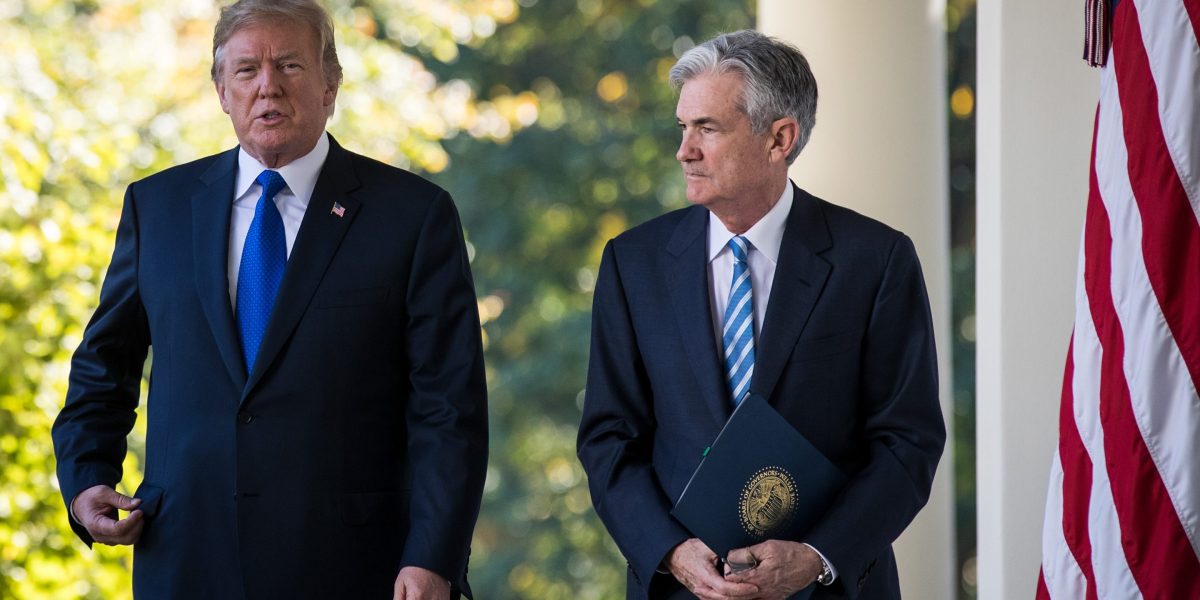
If the past is any guide, Federal Reserve Chairman Jerome Powell won’t go down without a fight.
He said in 2018 he would go to court if then-President Donald Trump tried to fire him, sources told the Wall Street Journal.
With Trump now a president-elect poised to return to the White House in a few months, their history with each other could color how any future disagreements play out.
During his first term as president, Trump appointed Powell as Fed chair in 2018, but later clashed with Powell as the Fed chief pushed back on demands for looser monetary policy.
Trump flirted with the idea of ousting the central banker at the time, but Powell told then-Treasury Secretary Steven Mnuchin that he would fight his removal, even though any legal expenses could come out of his own pocket, according to the Journal.
A Fed spokesman declined to comment. Trump’s presidential transition office didn’t directly address the report, only saying he will begin making decisions on who will serve in his second administration soon. But the Journal pointed out that he acknowledged last month he considered dismissing Powell during his first term.
“I was threatening to terminate him,” Trump said at the Economic Club of Chicago. “There was a question as to whether or not you could.”
Fast forward to last week. During a news briefing on Thursday after the Fed cut rates, Powell was asked if he would resign if Trump demanded it, and Powell simply replied “no.” Later he was asked if he thought a president has the authority to fire or demote a Fed chair or other Fed official in a leadership post, and Powell said, “Not permitted under the law.”
That exchange prompted Sen. Mike Lee, R-Utah, to post on X, “The Executive Branch should be under the direction of the president. That’s how the Constitution was designed. The Federal Reserve is one of many examples of how we’ve deviated from the Constitution in that regard. Yet another reason why we should #EndTheFed.”
Tesla CEO Elon Musk, who is expected to have a role in the Trump administration, then reposted it with a “100” emoji that indicates strong support.
Economists have said Fed independence is key to setting monetary policy without political pressure that could weaken its credibility on fighting inflation.
For now, Trump and Powell appear to be on the same page when it comes to lower rates. But that could change, perhaps as soon as early 2025, potentially setting up another showdown.
While the Fed is expected to cut rates again in December, some analysts have said that any additional signs that inflation is sticky or the economy is still growing robustly could lead policymakers to pause on further cuts.
Trump has suggested recently he would be better at monetary policy than Powell, who previously worked in investment banking and the Treasury Department, and expressed a desire to have some influence.
“I feel the president should have at least [a] say in there,” Trump said in August. “In my case, I made a lot of money, I was very successful, and I think I have a better instinct than, in many cases, people that would be on the Federal Reserve, or the chairman.”
And while Trump also told Bloomberg in June that he would let Powell complete his term, he also appeared to qualify it. “I would let him serve it out, especially if I thought he was doing the right thing.”
Powell’s term as chair expires in May 2026, and his term as a Fed governor expires in January 2028.
In 2019, Powell publicly and privately vowed not to be forced out by a president. During a hearing on Capitol Hill, he was asked if he would leave if ordered to, and he said no.
And according to the Journal, Powell also told a visitor that year that, “I will never, ever, ever leave this job voluntarily until my term ends under any circumstances. None whatsoever. It doesn’t occur to me in the slightest that there would be any situation in which I would not complete my term, other than dying.”
Meanwhile, Scott Bessent, who is an economic adviser to Trump and could be tapped as Treasury secretary, has suggested that an early appointment of Powell’s replacement could serve as a “shadow Fed chair,” essentially making Powell a lame duck with less influence.
The Journal said Bessent no longer thinks the idea is worth pursuing after receiving criticism on it, but he defended it last week, telling Forbes that it “enhances the credibility of the Fed.” The investment firm Key Square, which was founded by Bessent, didn’t immediately respond to a request for comment.
The Fed wasn’t independent in the past. But after President Richard Nixon pressured then-Fed Chairman Arthur Burns to loosen monetary policy ahead of the 1972 election, independence became the norm and proved critical as the Fed hikes rates aggressively in the 1970s and 1980s to fight inflation.
When it comes to dismissal, the Federal Reserve Act states that each Fed board member can only be removed “for cause.” There is no language in the act that deals directly with removing the Fed chair, but the position is considered a board member.
If Trump tried to fire Powell before his term, a lawsuit could send the issue to the Supreme Court, financial historian and a legal scholar Peter Conti-Brown of the Brookings Institution told Fortune previously.
But Trump has the ability to change the law with the help of a cooperative Congress, which looks like it will be under the full control of Republicans.
A newsletter for the boldest, brightest leaders:
CEO Daily is your weekday morning dossier on the news, trends, and chatter business leaders need to know.
Sign up here.

